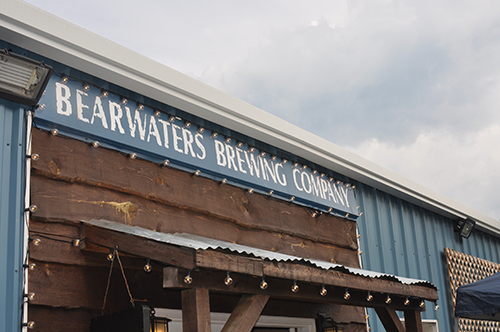
Small-minded thinking is what got Kevin Sandefur a big result so far.
The Waynesville, North Carolina nanobrewery, BearWaters Brewing Co., has seen growth at a rate of about 30 percent per month — hitting one- and two-year business goals in the first six months — since opening its doors in May, 2012. All that growth has been from one system, a half-barrel pilot nano system that has cranked out three batches of beer a day.
Sandefur’s success and aptitude for speaking landed him in front of hundreds of fellow brewers during the annual Craft Brewers Conference during a session on nanobrewing. Sandefur broke down the business of small-batch production — under 7 bbl. — and shared his knowledge that has seen his modest taproom grow to the point where the next logical step was to move past nanobrewing, increasing production to a 15 bbl. brewhouse a few weeks after CBC in Portland, Oregon.
“That was a tough decision,” he said. “If we were going to do incremental steps then it was just going to be a waste of capital to do that. I just felt with everything I had seen is that we would be ripping that [7 bbl. system] out in about a year.
“Instead of going through the process of constantly upfitting let’s just bank the money, work harder on the smaller system and at least get to the level of a 10 bbl. or above where we could have some more room to grow for at least 24 months before another upgrade.”
Sandefur has spoke about nanobrewing to crowds before. From students at Western Carolina University and other Charlotte schools, to brewers at the Great American Beer Fest from 2012-14. He said many of those in attendance at the CBC this year were “Breweries in Planning” — owners looking for viable options in their future businesses.
“[Nanos] are one of the highest percentage of breweries in planning now,” he said. “So it was a topic they felt was important to get out there this year. I was honored to do that for them.” I was told by one person that my session was worth the price of admission to the whole event and that meant a whole lot. It’s a nice compliment.”
After three years, and 700 bbl.’s of brew coming from his old system, which garnered 26 brewing awards including two international golds, Sandefur is moving up to a 15 bbl. system, using Tuscon’s Barrio Brewing’s former brewhouse. They expect to crank out 2,000 bbl.’s in the second half of the year.
It was a strategic move that Sandefur pointed out is vital in the growth of his business. He feels that nanos are a great way to start, but it’s not something that aspiring business owners should do just to “dip their toes” in the water.
“In the terms of a long-term sustainable business model, I don’t think it’s practical. … It amazes me how many people think they can get into this and do it part-time, keep their job and do brewing two-days a week. It’s a full-time job whether you want it to be or not because there is just so many things that have to be done.
“The brewing process itself is labor intensive. Dealing with the public, in a taproom format is a whole business onto itself. I was trying to be cautionary with people that they can’t keep their job and do this too, it just doesn’t work. It requires all your attention if you are going to do it right and do it well.”
Sandefur said that the key for his crew is investing and re-expanding, then starting all over again with investing with the new capital. Being wise with the reinvestment matters as well. “A three-barrel to me is a complete waste of money,” Sandefur said when talking about upgrading from his pilot system. “I saw a guy go from a pilot system like us to a three and it ended up costing him … about $85,000 invested in total to upgrade. “The overhead he took on for what is a stepping stone brewhouse is not practical. If you are going to take on additional overhead you might as well get a system that can cash flow the business to the extent that you are making a profit and paying for the equipment.”





Be the first to comment